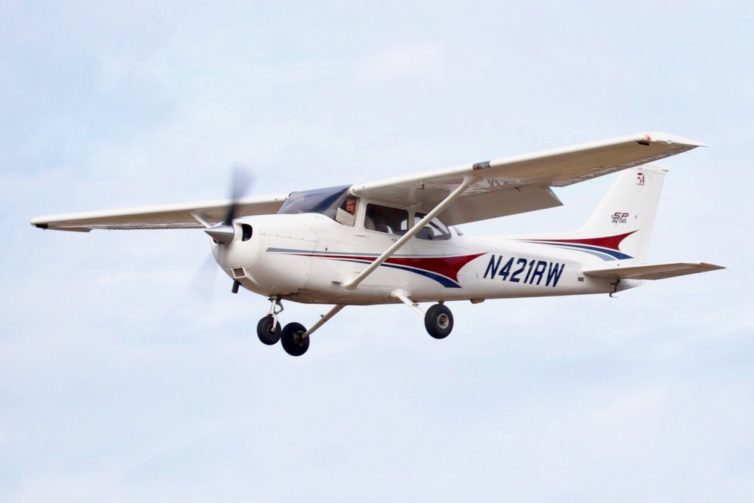
That’s me. In a plane. All by myself. – Photo: Chuyi Chuang
This is a continuation of my multi-part series on learning to fly. You can read the whole Fly With Francis series here.
I did it! I flew an airplane totally by myself over the Labor Day weekend. It was, in absolutely equal parts, terrifying and exhilarating.
Doing this was the culmination of a lifelong dream. Unlike a lot of airplane nerds, I don’t have any close family with ties to aviation. Instead, all of this started for me as a boy – my grandmother would take my brother and me to our little local general aviation (GA) airport in western Massachusetts, where we’d lie on the hood of her ’69 Beetle and watch skydivers while eating ice cream. My interest in planes waxed and waned over the years, but never really went away. There was a time when *gasp* I was afraid of flying – my first-ever flight experience was a very turbulent series of flights down the Atlantic Coast in the height of summer that put me off flying for a long time.
Fast forward to about a decade ago, when my wife got us a helicopter tour of Seattle for my birthday. The desire to fly returned with a vengeance. And the fear had long faded.
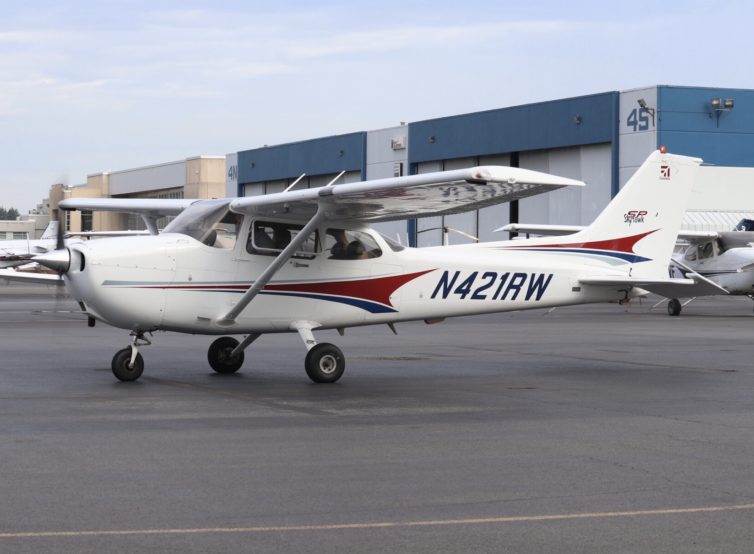
That’s me, working through preflight checklists on the Galvin ramp – Photo: Chuyi Chuang
Anyway, at a flight school like Galvin, periodic stage checks ensure students are properly prepared to advance to the next segment of training by having them work with different instructors, who both confirm the students’ competency and verify that the primary instructor has done their work properly. Some find the process cumbersome; for me the rigor is comforting.
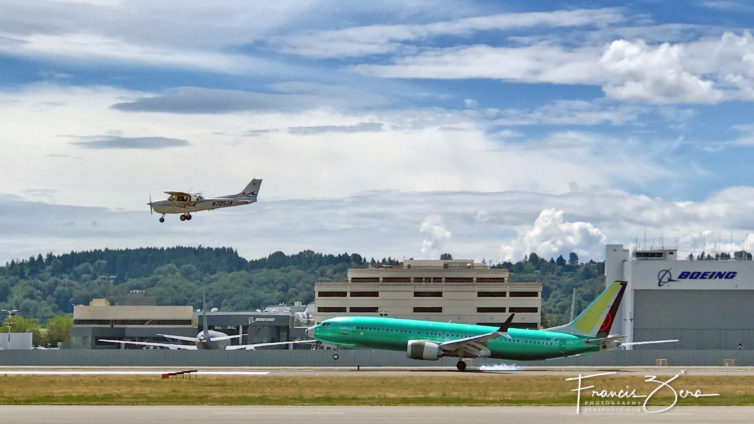
Always lots going on at BFI – that’s an Air Canada B737 MAX 8 fresh from the Renton plant, landing next to one of Galvin’s C172s
This is a continuation of my multi-part series on learning to fly. You can read the whole Fly With Francis series here.
A few weeks ago, I completed the written pre-solo exam and Cessna 172S checkout paperwork. Both tests are specific to Galvin’s flight school/rental program. The former test covered lots of flight-safety topics, while the checkout test covered aircraft-specific things like performing weight and balance calculations, flight planning, fuel consumption, takeoff and landing distances based on hypothetical weight and balance figures, and so on.
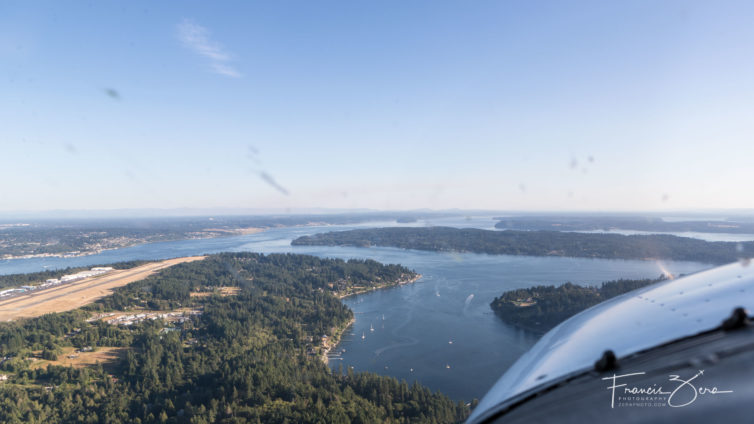
Taking a spin around the west side of TIW (Tacoma)
I’ve had to back off the frequency of flight training a bit; this is definitely an expensive exercise. I’ve gone from flying two or three times a week to three times every two weeks to stretch the budget a bit. This is, based on conversations with fellow students, also nothing out of the ordinary.
That pacing, though, has made me feel like my skills have been stagnating a bit. I had a frustrating flight a week or so ago, where nothing seemed to go smoothly and my memory of the required procedures needed refreshing by the instructor, rather than my just doing them without prompting; it was disheartening.
There have been a couple of flights like that.
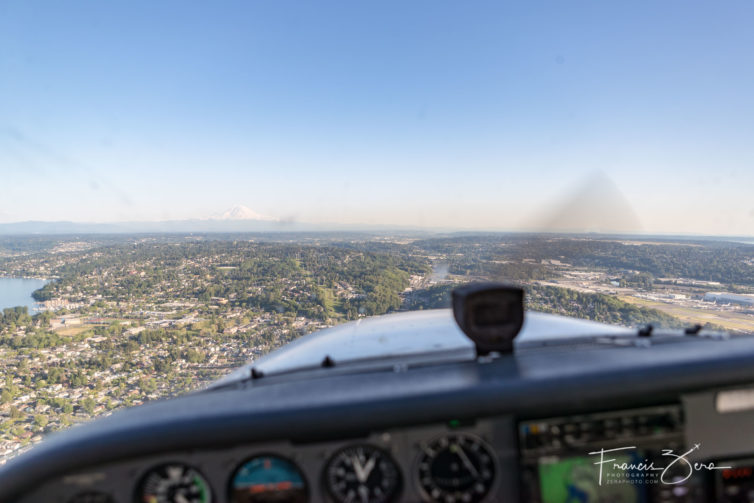
In the traffic pattern at Boeing Field. The view doesn’t suck – that’s Mount Rainier on the horizon, and the airfield is on the lower-right side of the image.
This is a continuation of my multi-part series on learning to fly. You can read the whole Fly With Francis series here.
After six weeks, which went past in a seeming eyeblink, I’ve completed ground school. Drinking from a fire hose is an appropriate analogy. Still, I passed all three written stage tests, and just passed the written comprehensive finals, which consisted of two separate tests over two class sessions. Next up will be scheduling and taking the proper FAA written exam before all this hard-earned info leaks out of my brain.
I’ve also been flying quite a lot with my CFI (aka my instructor) – two or three hours a week on average. I’m learning new skills like crazy, but am also burning through money like a Silicon Valley startup. In contrast with most of my stories, I don’t have very many photos to share for this series, not at least so far. Learning how to fly is hard, and if I’m on the controls the whole flight, there’s no time for taking photos. I’m considering finding a way to mount a GoPro either inside or outside the plane so there’s at least some video to share.
Anyway, we started doing pattern work a week or so ago; that means pretty much flying in the airport’s prescribed traffic pattern, doing a touch-and-go, then re-entering the pattern. Lather, rinse, repeat. At Boeing Field (BFI), you can get about six laps around the pattern into a one-hour lesson.
The first time we did this, it was utterly demoralizing. I’m flying a plane, which is amazing and fun, but landing is *hard*. Especially when dealing with BFI’s notoriously squirrelly crosswinds.
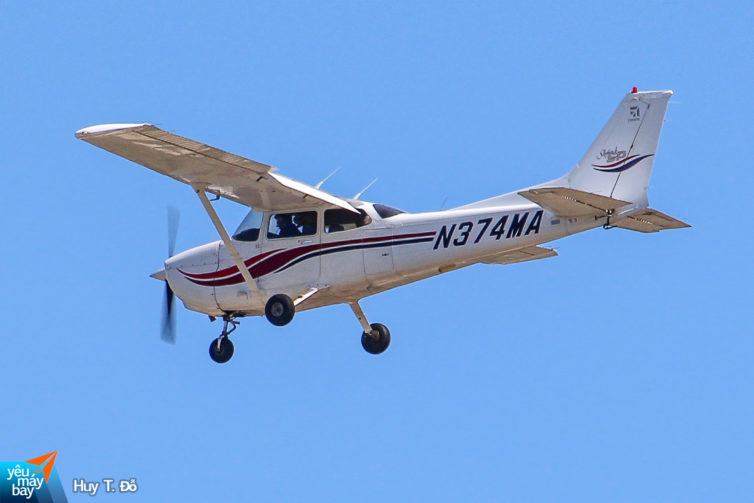
That’s us, coming in to land at BFI following my first training flight with Galvin Flying – Photo: Huy Do
This is a continuation of my multi-part series on learning to fly. You can read the introduction here.
As of now, I’ve completed the stage one and two ground-school exams. These exams are administered by the ground-school instructor at Galvin Flying and serve as checkpoints; they don’t count toward the FAA exam.
I’ve passed them both, which is encouraging (a passing grade is 70% – I did quite a bit better than that).
We’ve already covered basic aerodynamics, powerplants, flight instruments, airspace, airports, communications, and flight safety. We just wrapped up the comprehensive weather and FAA regulation sections; now it’s on to flight planning, which is where the math starts. We’ll learn to compute things like fuel consumption rates, time/speed/distance, endurance, airspeed, density altitude, and wind correction angles.
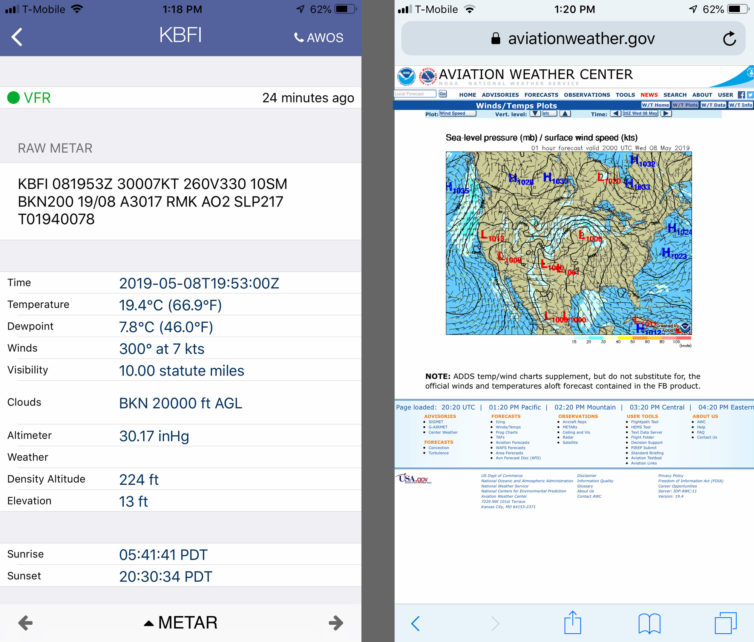
Believe it or not, this weather stuff is starting to make sense
Ground school wraps up on May 25th with a comprehensive knowledge test, which is basically a full-on practice version of the proper FAA exam.
Theoretically, if we’ve successfully completed the course, we’ll then be prepared to plunk down the roughly $165 to take the FAA written test; a grade of at least 70% is required to pass.
I’ve also started flight training. I didn’t mention before, but basically my butt is a bit too heavy for the Cessna 152, which is the aircraft I’d originally planned to train in, primarily for the $60/hour cost savings over the larger C172. Putting two 200 lb. adult males (my CFI isn’t a small guy, either) in a C152 means no cross-country flights, as the aircraft’s maximum payload limit leaves room for no more than 1/2 tank of fuel. I won’t lie, though, I do like the larger plane.
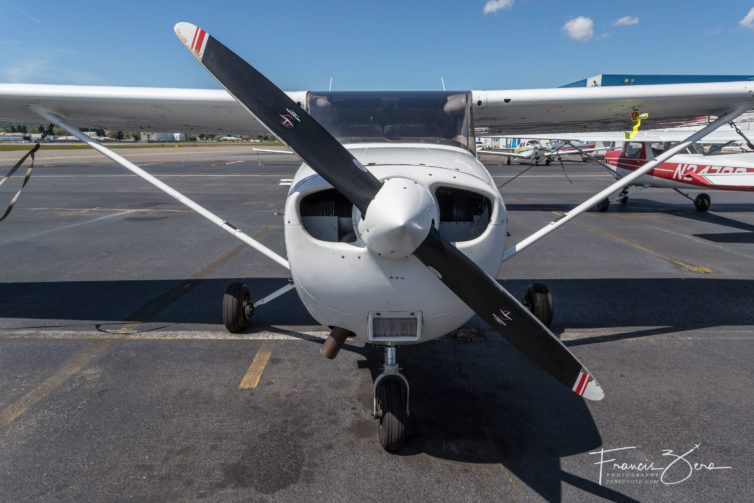
The business end of a Cessna 172, the type of plane I’ll be training in
Yep. I’m finally doing it.
After close to a decade of talking about taking flying lessons, and after a couple of false starts, I’ve plunked down my money and started ground school last month with Galvin Flying at King County International Airport, aka Boeing Field, aka BFI, in Seattle.
Flying is both a spendy and time-intensive process. I’ve taken a number of introductory flight lessons, and at one point I actually started flight training with a private instructor and self-guided ground school (that’s the experience that made me realize a formal program would be better for me). I’ve also ridden along with several friends and their instructors on their own training flights.
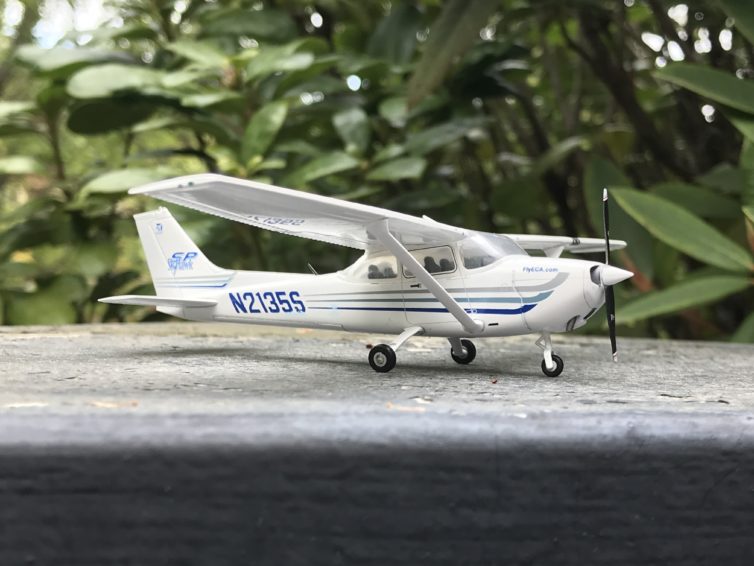
Of course I needed a model C172 to help with training
Anyway, here I am, about halfway through ground school. Now, as JL has already told you, formal ground school is optional, as there are many legit self-study options available that will prepare you for the FAA written exam. Key to any learning endeavor – especially one for folks for whom school of any kind is a couple of decades in the past – is knowing your learning style preferences.
From experience, I know that my most effective learning style is a combination of books and a human instructor, hence my choice of classroom-style ground school. Other folks might prefer videos, still others might choose a self-paced pre-packaged program; all those options are available.
Student pilot requirements get their own chapter in the FAR/AIM, which is the combined set of Federal Aviation Regulations (FAR) and the Aeronautical Information Manual (AIM). It’s the bible for flying in the U.S. I’m here to tell you that it definitely contains lots more rules and regulations than the real Bible.








